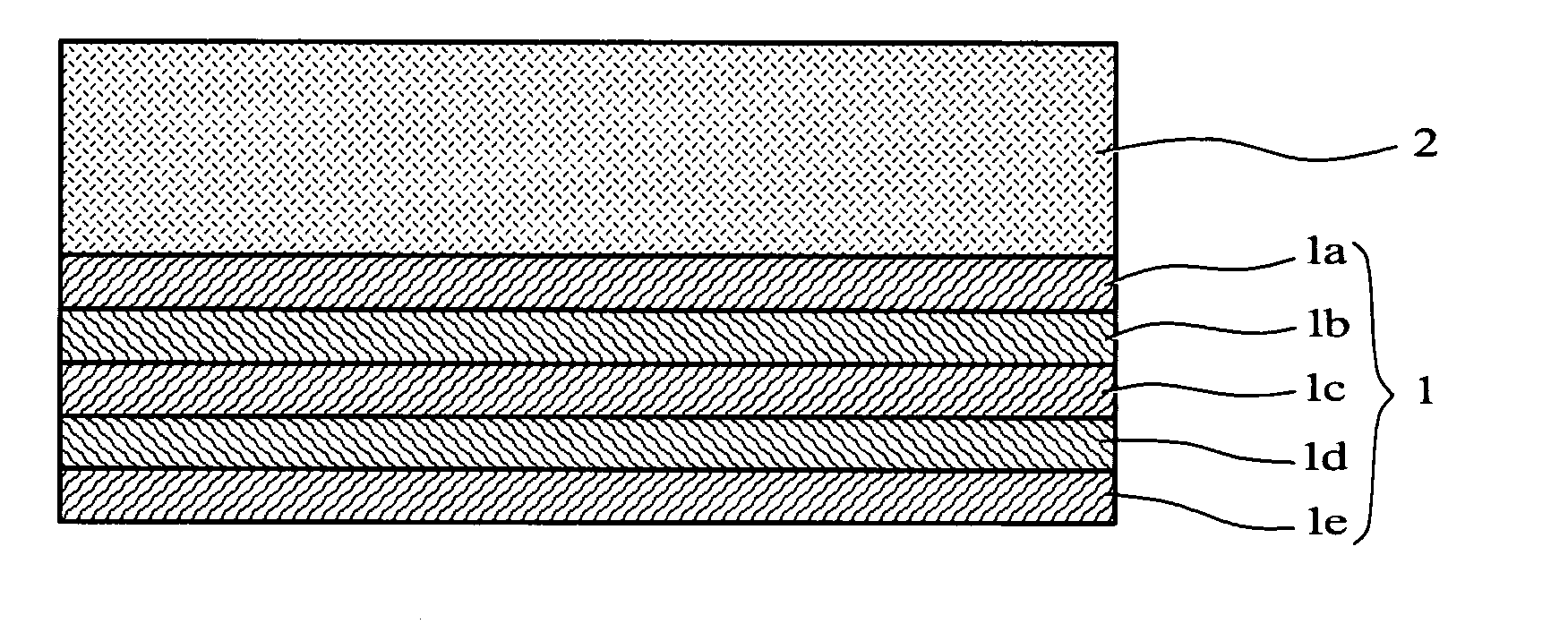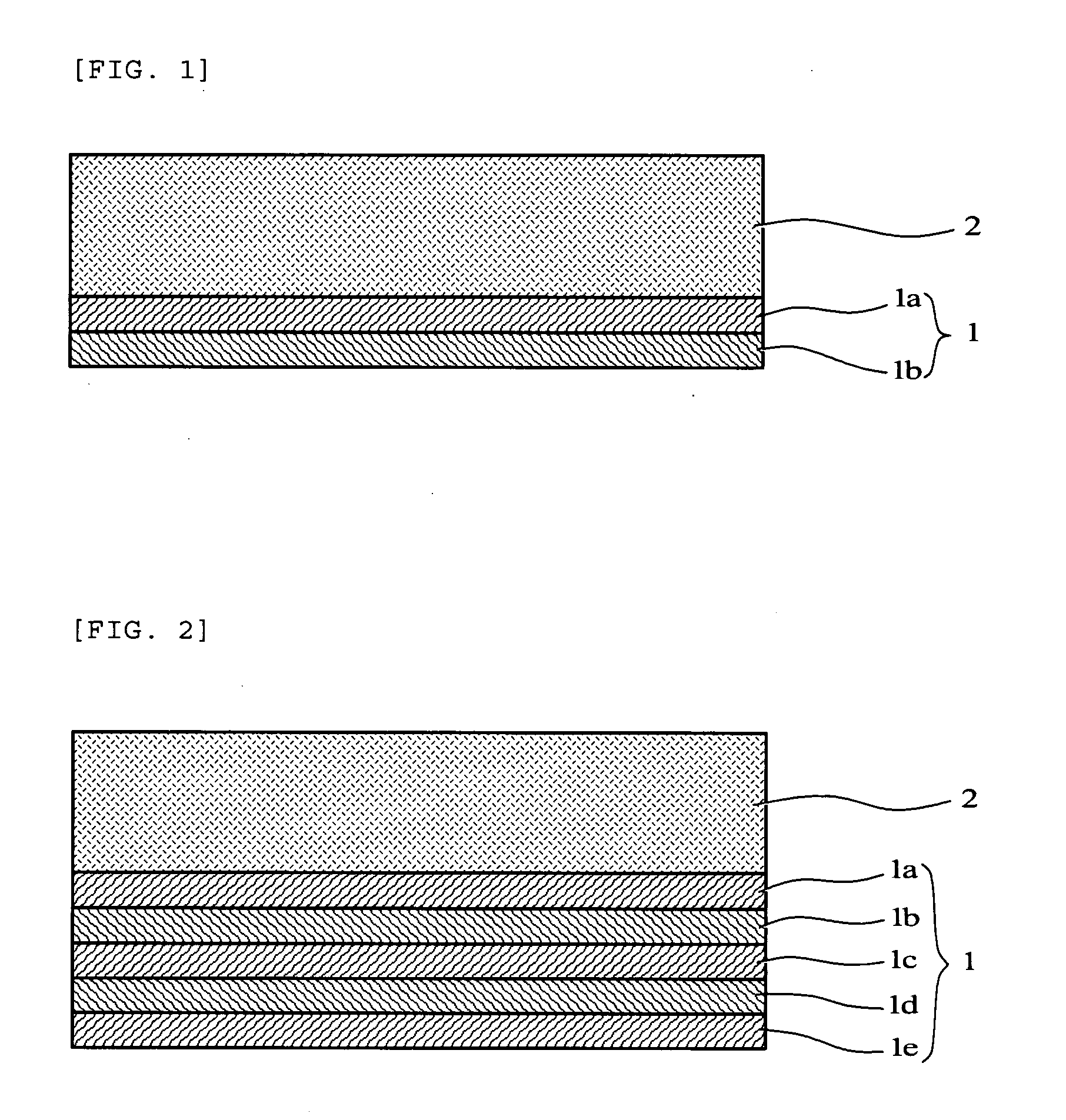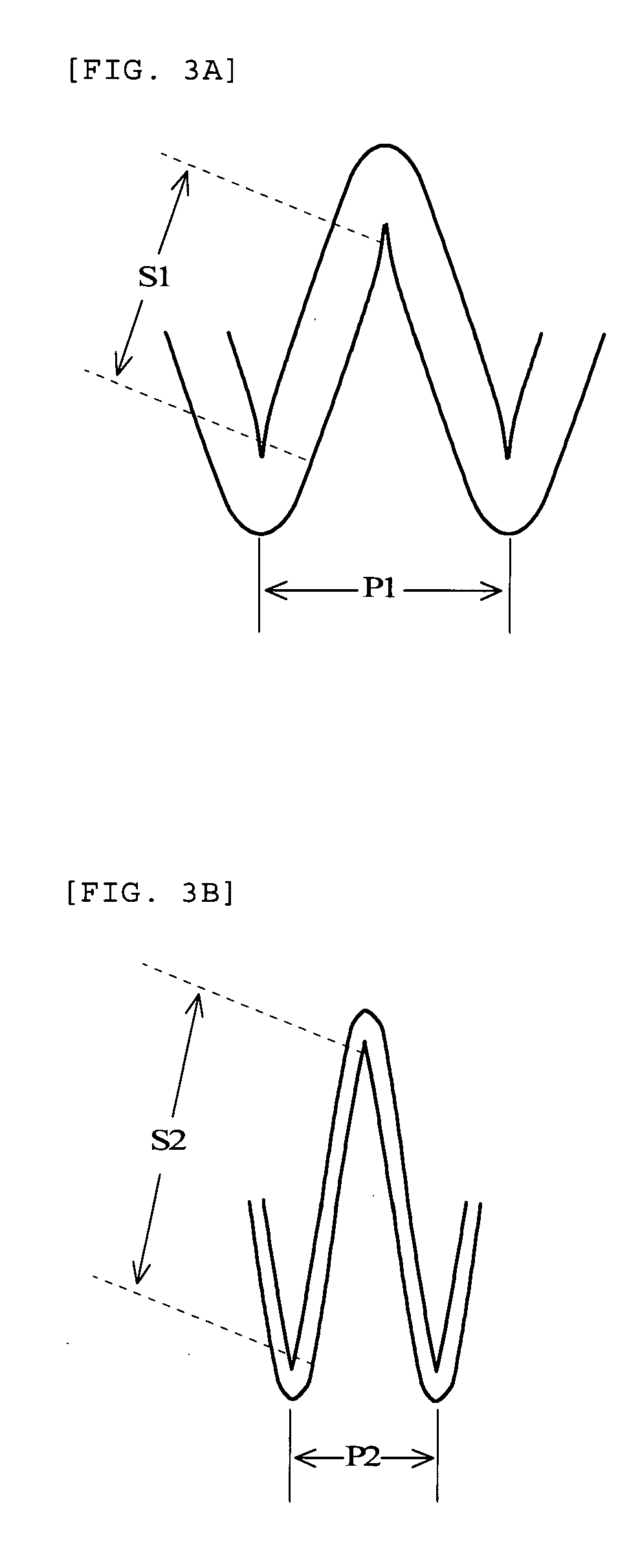Air filter material
a technology of air filter and material, applied in the direction of filtration separation, combustion-air/fuel-air treatment, separation process, etc., can solve the problems of engine failure, sensor malfunction, and inability to obtain the intended air flow rate, etc., to achieve a well-balanced
- Summary
- Abstract
- Description
- Claims
- Application Information
AI Technical Summary
Benefits of technology
Problems solved by technology
Method used
Image
Examples
example 1
[0050](1a) Initially, a carded web (30 g / m2 in areal fiber weight) containing 30 parts by weight of 0.9-dT polyester staple (51 mm in length, from Teijin Fiber Co., Ltd.) and 70 parts by weight of 1.6-dT polyester staple (51 mm in length, from Teijin Fiber Co., Ltd.) was created, and was made into spunlace nonwoven fabric by hydroentangling. The resulting spunlace nonwoven fabric had a “mean flow pore size,” a “minimum pore size,” and a “maximum pore size” as follows:
[0051]“mean flow pore size”: 63.7 μm,
[0052]“minimum pore size”: 7.1 μm, and
[0053]“maximum pore size”: 144.6 μm.
(1b) Next, a carded web (60 g / m2 in areal fiber weight) containing 1.6-dT polyester staple (51 mm in length, from Teijin Fiber Co., Ltd.) was created, and was made into spunlace nonwoven fabric by hydroentangling. The resulting spunlace nonwoven fabric had a “mean flow pore size”, a “minimum pore size”, and a “maximum pore size” as follows:
[0054]“mean flow pore size”: 48.8 μm,
[0055]“minimum pore size”: 7.9 μm, ...
example 2
[0060]A carded web (75 g / m2 in areal fiber weight) containing 50 parts by weight of 3.3-dT polyester staple (51 mm in length, from Teijin Fiber Co., Ltd.) and 50 parts by weight of 6.7-dT polyester staple (51 mm in length, from Teijin Fiber Co., Ltd.) was created, and was made into nonwoven fabric by needle punching, thereby obtaining an air inlet layer sheet. Except the use of this air inlet layer sheet, the same operations as in example 1 were repeated to obtain an air filter material. The resulting air filter material was 1.70 mm in thickness and 230 g / m2 in weight, and had a “mean flow pore size,” a “minimum pore size,” and a “maximum pore size” as follows:
[0061]“mean flow pore size”: 35.1 μm,
[0062]“minimum pore size”: 3.7 μm, and
[0063]“maximum pore size”: 69.9 μm.
example 3
[0064](3a) Initially, a carded web (30 g / m2 in areal fiber weight) containing 1.6-dT polyester staple (51 mm in length, from Teijin Fiber Co., Ltd.) was created, and was made into spunlace nonwoven fabric by hydroentangling. The resulting spunlace nonwoven fabric had a “mean flow pore size,” a “minimum pore size,” and a “maximum pore size” as follows:
[0065]“mean flow pore size”: 94.4 μm,
[0066]“minimum pore size”: 6.2 μm, and
[0067]“maximum pore size”: 178.0 μm.
(3b) A carded web (70 g / m2 in areal fiber weight) containing 50 parts by weight of 3.3-dT polyester staple (51 mm in length, from Teijin Fiber Co., Ltd.) and 50 parts by weight of 6.7-dT polyester staple (51 mm in length, from Teijin Fiber Co., Ltd.) was created, and was made into nonwoven fabric by needle punching, thereby obtaining an air inlet layer sheet.
(3c) Five pieces of the spunlace nonwoven fabric of the foregoing step (3a) were stacked to form an air outlet layer sheet, and the air inlet layer sheet of the foregoing s...
PUM
| Property | Measurement | Unit |
|---|---|---|
| pore size | aaaaa | aaaaa |
| pore size | aaaaa | aaaaa |
| pore size | aaaaa | aaaaa |
Abstract
Description
Claims
Application Information
 Login to View More
Login to View More - R&D
- Intellectual Property
- Life Sciences
- Materials
- Tech Scout
- Unparalleled Data Quality
- Higher Quality Content
- 60% Fewer Hallucinations
Browse by: Latest US Patents, China's latest patents, Technical Efficacy Thesaurus, Application Domain, Technology Topic, Popular Technical Reports.
© 2025 PatSnap. All rights reserved.Legal|Privacy policy|Modern Slavery Act Transparency Statement|Sitemap|About US| Contact US: help@patsnap.com



